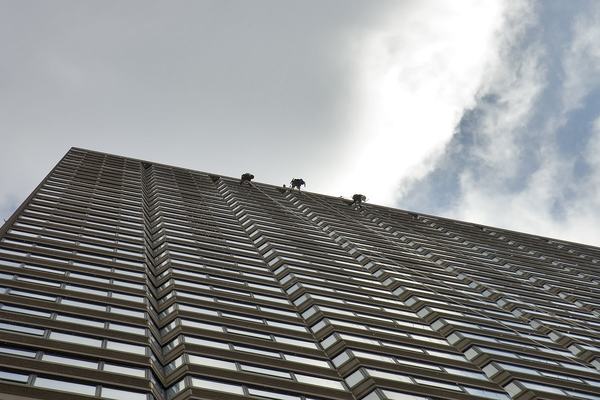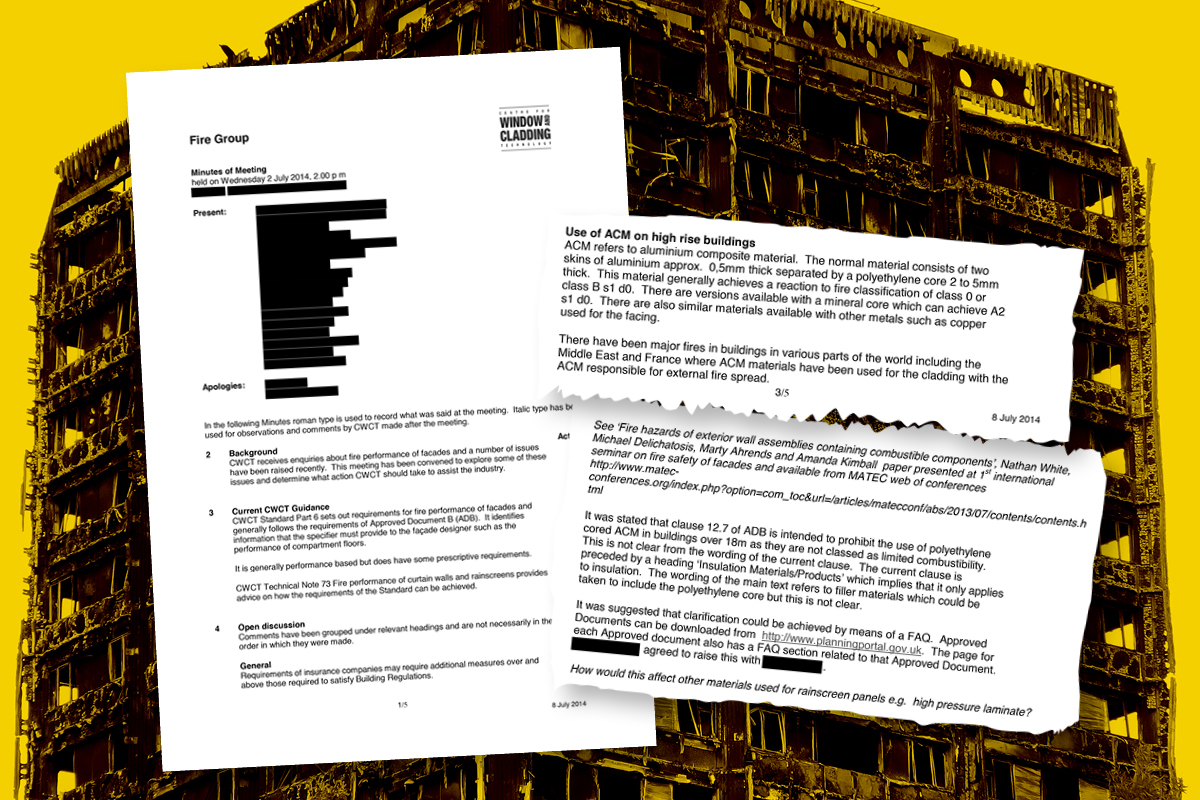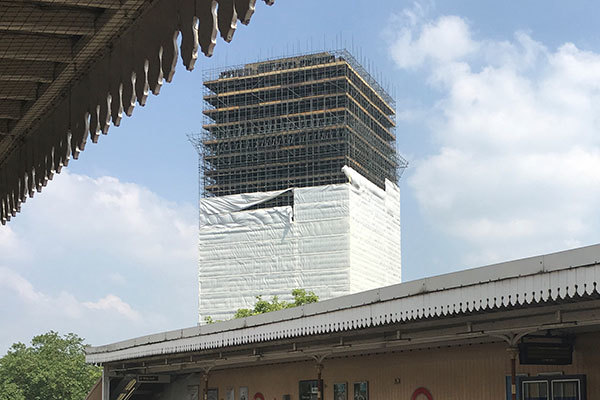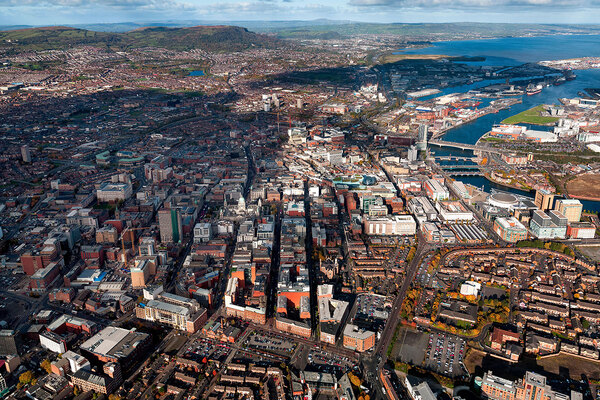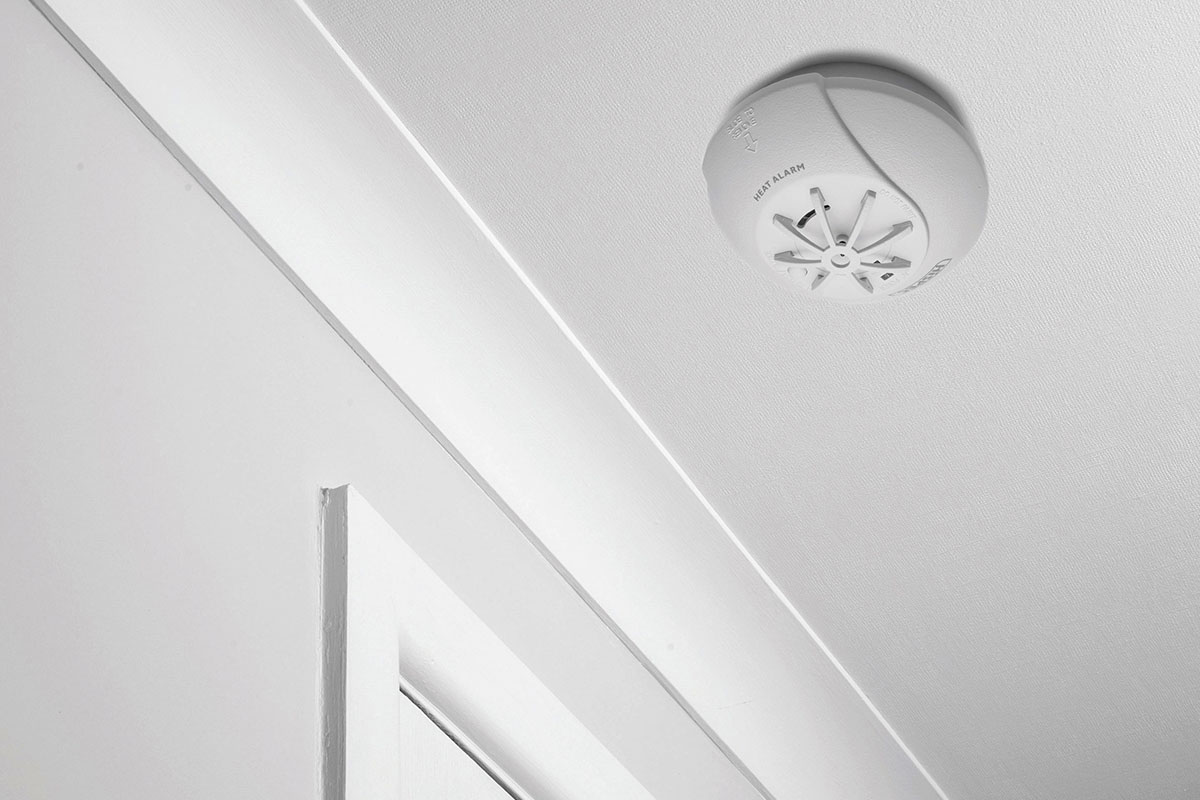You are viewing 1 of your 1 free articles
Government removes passage blamed for cladding crisis from new draft guidance
The government has published a new draft guidance to building regulations which quietly removes the provision many have blamed for the flammable cladding crisis.
A new draft version of Approved Document B – the official guide to building regulations and fire safety – was released today along with a consultation on the changes.
The new document drops a previous paragraph which permitted materials with a fire rating of ‘Class B’ or ‘Class 0’ to be used on the ‘external surface’ of tall buildings.
Instead, it now says that all materials used on the external walls of high rises should meet the higher standard of ‘Class A2’ or better.
It comes amid a widening crisis around the country, with more than 600 buildings clad in materials which are believed to pose a fire risk to the block.
The aluminium composite cladding which was used on Grenfell, and is blamed by experts for being the primary cause of the giant fire which killed 72 people, was certified to Class 0 by the British Board of Agrément.
The government has since refused to accept its guidance contributed to this, claiming that the Class B rating did not apply to cladding panels.
Instead, it has said the higher standard of ‘limited combustibility’ or Class A2 should apply, as this was the standard for ‘insulation materials’ including ‘filler’.
Rainscreen cladding panels do not have an insulation function and are installed to improve the appearance of a building and keep the insulation dry.
Class 0 or Class B rated cladding panels are currently being removed from hundreds of buildings nationwide.
The new draft guidance reads: “To reduce the risk of fire spreading over the external walls, where a building with a storey 18m or more above ground level, materials in or on the external walls should meet Class A2… or better.”
The previous guidance had said: “The external surfaces of walls should meet the provisions in Diagram 40.” Diagram 40 – no longer present in the new draft – showed Class 0 or Class B or better as the applicable standard.
A fuller review of the approved document will be carried out in the autumn, the government said today.
The government has said the new guidance reflected its commitment on an outright ban on combustible materials. This is subject to an ongoing consultation. This week a cross-party committee of MPs said the proposed ban did not go far enough.
The government was told to update Approved Document B after the Lakanal House fire in south London in 2009, which killed six people.
That fire occurred after window panels, which should have had a Class 0 rating under regulations, allowed a fire to spread out of its flat where it started.
Despite the coroner’s recommendation in 2013, Eric Pickles, then communities secretary, said the review of the guidance would not be complete until 2016/17.
The cladding on Grenfell was added in a refurbishment completed in 2016, three years after the coroner’s recommendations at Lakanal House.
